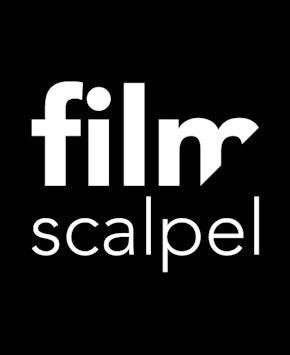- ...
- home
- news
- ffg wide ...
FFG Wide Angle: Video essays Tokyo Story

It is a triumvirate with other aspirations than the classical analytical approach. For Kogonada, Jorge Suárez-Quiñones Rivas and Evan Puschak do not only study Ozu's stylistic approaches. They are inspired by his artistic approach and employ his style as their own modus operandi. Had Yasujirō Ozu made video essays himself, they would have resembled this three-strong selection.
Fond of Ozu
Steady repetition and minimal variation are organising principles of Ozu's oeuvre. The repetitions often concern domestic rituals, but there are more motifs that appear in his films over three decades - from tea over trains to tears. In Way of Ozu, Kogonada compiles some of these motifs. The visual triptych he builds is a quiet distillation of Ozu's essence. The montage is made up of visual echoes and allows Ozu's films to comment on themselves.
Way of Ozu from kogonada on Vimeo.
Video essayist Kogonada is fond of Ozu: this is not his only work on the Japanese director. (The pseudonym Kogonada is actually a reference to one of Ozu's most loyal artistic collaborators, screenwriter Kogo Noda). The gem Ozu // Passageways is a supercut of alleys and corridors that clearly shows how Ozu uses those in-between spaces. The corridors become transitions and in the narrow streets, the characters are eternally on the move. For with Ozu, only temporality is eternal.
Ozu // Passageways from kogonada on Vimeo.
Kogonada's video essays on Ozu (and his equally brilliant montages on the work of Bresson and Bergman, Linklater and Malick) turned out to be finger exercises for his career as a director. Because in the meantime he has made the leap to feature films: his debut Columbus (2017) could be enjoyed at Film Fest Gent and After Yang (2021) is also a favourite on the festival circuit. It is not difficult to discover Ozu's influence in those feature films. Kogonada, too, serves up finely-tuned family stories that reveal their secrets sparingly and shun the grand gesture.
Setsuko solo
In The Eternal Virgin, Jorge Suárez-Quiñones Rivas takes a close look at the six collaborations of Yasujirō Ozu with actress Setsuko Hara. In these six films, she is both instrument and performer of the minimalist poetics of the Japanese director. Her performances combine metronomic precision with emotional subtlety.
Video essays lend themselves perfectly to the study of acting. Interpretations are easier to capture on video than on paper: you can skip the translation to the written word. But Suárez-Quiñones Rivas has other ambitions with his video essay than to investigate Setsuko Hara's traits or tricks.
His tape edit consists of exactly 71 shots: they are all interior shots from Ozu's films with Setsuko Hara in which she can be seen all by herself. Each shot is used in its entire length, just as it was in the original film. Only the sequence is mixed up: it is not the narrative chronology that dictates the editing, but the rhythm of the images. Jorge Suárez-Quiñones Rivas (not coincidentally an artist and filmmaker himself) makes Ozu's creative rigour his own and uses it like a scalpel to fillet the six collaborations of director and muse.
The result is a hypnotic video essay that is as rigorous and evocative as Yasujirō Ozu's films themselves. It is not only Setsuko Hara's performances that come into focus here: as the acting is disconnected from the storylines, we also see how her body language is an important component of Ozu's aesthetic rigour... And how Hara enriches it with a generous dose of mildness.
Porcelain cinema
Late Spring (1949) was Yasujirō Ozu's first collaboration with Setsuko Hara. She portrays a devoted daughter who prefers the company of her father to that of a husband. But the most talked-about image from this tender double portrait is not of daughter Hara, nor father Chishū Ryū. It is a static image of a vase.
In his video essay Why Did Ozu Cut To A Vase? Evan Puschak explores the meaning of that enigmatic cutaway shot. Puschak (who operates under the nom de vidéo The Nerdwriter) juxtaposes half a dozen interpretations, from film critics and scientists to filmmakers and thinkers. None of the possible explanations is given more weight than another; they stand shoulder to shoulder. Puschak also uses this strategy of juxtaposition visually: in a few well-chosen side-by-side passages, he clarifies Ozu's formal choices.
Many video essayists on YouTube give pace priority over depth. Their short-lived montages seem to take the limited attention span of their viewers for granted. Essayist Evan Puschak rows against that fast stream. With moments of stillness, he gives his argument room to breathe and the viewer has time to come to his own conclusions.
Kogonada, Jorge Suárez-Quiñones Rivas and Evan Puschak all mirror Ozu's style. None of the mentioned video essays proclaim any certainties: all of them celebrate the mystery of Ozu. In doing so, they use the audiovisual format as a veil, not as a chisel. Because cinema is delicate.

Filmscalpel
Platform and website that pays attention to the format of the video essay, curated by David Verdeure.